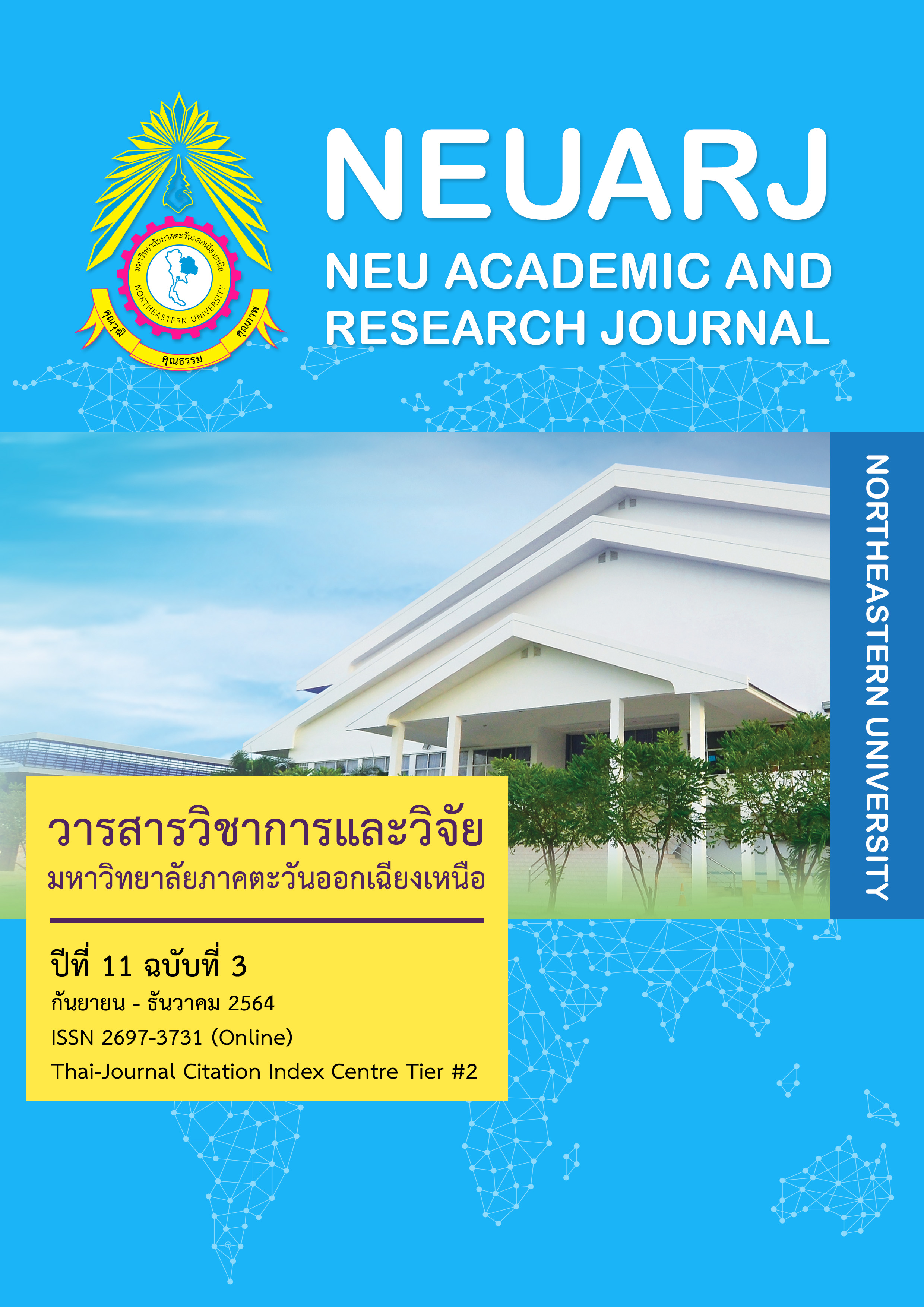The Influence of Perceived Product Quality and Service Quality on Repeat Customers Use of Japanese Restaurants
Keywords:
Product quality, Service Quality, Repeat Customers Use, Japanese RestaurantAbstract
The purposes of this research were 1) to study the reception of product quality, service quality on repeat customers use at Sushi Japanese Restaurant and 2) to explore the influence of product quality and service quality on repeat customers use at Sushi Japanese Restaurant. The questionnaire was used as a tool to collect data from 400 customers in Sushi Japanese Restaurant at Phra Nakhon Sri Ayutthaya Province. Moreover, a purposive sample strategy in a form of non-probability sampling was chosen to select the population in the study. The descriptive statistics and inferential statistics used to analyze test hypotheses. The result shown that the product quality and service quality on repeat customers use at Sushi Japanese Restaurant was at high level. Similarly, the factors were significantly on repeat customers use at Sushi Japanese restaurant at 0.01. Therefore, these results were as a guide line for Japanese restaurant entrepreneurs on giving service and as a guide to develop products quality and service quality to meet consumers’ need. Besides that, the result of the study was to increase capabilities to compete in the market of Sushi Japanese restaurant.
References
เกตุวดี สมบูรณ์ทวี. (2561). ปัจจัยด้านคุณภาพการบริการที่มีอิทธิพลต่อการตัดสินใจซื้อซ้ำผลิตภัณฑ์อาหารผ่านผู้ให้บริการ “Food Panda Applicatin” วารสารการจัดการสมัยใหม่, 16 (1), 153-162.
บุญใจ ศรีสถิตย์นรากูร. (2555). การพัฒนาและตรวจสอบคุณภาพเครื่องมือวิจัย: คุณสมบัติการวัดเชิงจิตวิทยา. พิมพลักษณ์, กรุงเทพฯ: จุฬาลงกรณ์มหาวิทยาลัย.
ปิยพงศ์ พู่วณิชย์ และ วิโรจน์ เจษฏาลักษณ์. (2558). อิทธิพลของการกำกับดูแลกิจการที่ดีและการรับรู้คุณภาพการบริการของลูกค้าที่มีผลต่อความไว้วางใจและความจงรักภักดีของลูกค้าธนาคารออมสิน. วารสารวิทยาการจัดการสมัยใหม่, 8(1), มกราคม–มิถุนายน, 78-93.
วสุธิดา นุริตมนต์ และ ณภัทร ทิพย์ศรี. (2562). อิทธิพลของคุณภาพบริการและการบริหารความสัมพันธ์ที่ส่งผลต่อความตั้งใจใช้บริการซ้ำ: การศึกษาเชิงประจักษ์ลูกค้าที่ใข้บริการโรงแรมในจังหวัดพระนครศรีอยุธยา. วารสารสุทธิปริทัศน์, 33(105), มกราคม-มีนาคม,175-186.
วารสารมาร์เก็ตเทียร์. (2563). ร้านซูซิ และตลาดร้านอาหารญี่ปุ่น เติบโตเพราะคนไทยต่างจังหวัด. สืบค้นเมื่อวันที่ 6 พฤษภาคม 2564), จาก https://www. https://marketeeronline.co/archives/201981
ศุภิสรา กิจเจริญ, วสุธิดา นุริตมนต์ และ ณฐาพัชร์ วรพงศ์พัชร์. (2563). อิทธิพลของภาพลักษณ์องค์กรต่อความภักดีของผู้บริโภคที่ใช้บริการร้านกาแฟสตาร์บัคส์ในจังหวัดพระนครศรีอยุธยา. วารสารวิชาการและวิจัย มหาวิทยาลัยภาคตะวันออกเฉียงเหนือ, 10(3), กันยายน-ธันวาคม, 92-105.
สำนักข่าวสารญี่ปุ่น สถานเอกอัครราชทูตญี่ปุ่นประจำประเทศไทย. (2559). อาหารญี่ปุ่นอาหารยอดนิยม. สืบค้นเมื่อวันที่ 25 สิงหาคม 2563, จาก https://www.th.emb-japan.go.jp/th/jis/publ/59_1.pdf.
สำนักงานกองทุนสนับสนุนการสร้างเสริมสุขภาพ. (2556). อาหารมีความสำคัญต่อการดำเนินชีวิต. สืบค้นเมื่อวันที่ 25 สิงหาคม 2562, จาก https://www.thaihealth.or.th.
องค์การส่งเสริมการท่องเที่ยวญี่ปุ่น. (2556). ข้อมูลทั่วไปประเทศญี่ปุ่น. สืบค้นเมื่อวันที่ 25 สิงหาคม 2562, จาก https://www.jnto.or.th/contactus.
อรอนงค์ เกสรบุญนาค และ วสุธิดา นุริตมนต์ (2562). อิทธิพลของคุณภาพการบริการและภาพลักษณ์องค์กรที่มีต่อการสื่อสารแบบปากต่อปากของผู้ใช้บริการทางการแพทย์ในโรงพยาบาลราชธานี. วารสารบัณฑิตวิทยาลัยพิชญทรรศน์, 14 (1), มกราคม-เมษายน, 209-218.
Aaker, D.A. (1996). Measuring Brand Equity Across Products and Markets. California Management Review, 38(3), 102-120.
Ahmed, I., Shankat, M. Z., Nawaz, M. M., Ahmed, N., and Usman, A. (2011). Determinants of the satisfaction and repurchase intentions of users of short messenger services (SMAS): A study in the telecom sector of pakistan. International Journal of Management, 28, 763-772.
Brady, M., and Robertson, C. (2001). Searching for consensus on the antecedent role of service quality and satisfaction: An exploratory cross-national study. Journal of Business Research, 51(1), 53–60.
Chau, V. S., and Kao, Y. Y. (2009). Bridge over troubled water or long and winding road? gap-5 in airline service quality performance measures. Managing Service Quality, 19(1), 106-134.
Clark, M. A., and Wood, R. C. (1999). Consumer loyalty in the restaurant industry: Apreliminary exploration of the issues. British Food Journal, 10(4), 317-327.
Cochran, W. G. (1977). Sampling techniques. (3rd ed.). New York: John Wilay and Sons.
Cronbach, L.J. (1951). Coefficient Alpha and the Inter Structure of Tests, Psychometrika, 16(3), 297-334.
Cronin, J. J., Brady, M. K., and Hult, G. T. M. (2000). Assessing the effects of quality, value, and customer satisfaction on consumer behavioral intentions in service environments. Journal of retailing, 76(2), 193-218.
Dabholkar, P. A., Shepherd, C. D., and Thorpe, D. I. (2000). A comprehensive framework for service quality: an investigation of critical conceptual and measurement issues through a longitudinal study. Journal of Retailing, 76(2), 139–173.
Hair, J. F., Black, W. C., Babin, B. J. and Anderson, R. E. (2010). Multivariate Data Analysis (7th ed.). Upper Saddle River, NJ: Prentice Hall.
Hellier, P. K., Geursen, G. M., Carr, R. A., and Rickard, J. A. (2003). Customer repurchase intention: A general structural equation model. European Journal of Marketing, 37, 1762-1800.
Ismail, T.A.T., Muhammad, R., Yusoff, N.M., and Shariff, M.S.M. (2016). The Myth and Reality of Hotel Brand and Food Quality: The Case of Hotel Restaurants in Malaysia. Procedia-Social and Behavioral Sciences, 222, 382-389.
Namkung, Y., and Jang, S. (2007). Does food quality really matter in restaurants? Its impact on customer satisfaction and behavioral intentions. Journal of Hospitality & Tourism Research, 31(3), 387- 409.
Narayandas, D. (1998). Measuring and Managing the Benefits of Customer Retention. Journal of Service Research, 12, 162-169.
Oliver, R. L. (1999). When consumer loyalty. Journal of Marketing, 63, 33-44.
Parasuraman, A., Berry, L. L. and Zeithaml, V. A., (1990). Delivering quality service: Balancing customer perceptions and expectations. New York: The free press.
Ryu, K., Han, H., and Kim, T. H. (2008). The relationships among overall quick-casual restaurant image, perceived value, customer satisfaction, and behavioral intentions. International Journal of Hospitality Management, 27(3), 459-469.
Ryu, K., Kim, G.W., and Lee, H. (2012). The influence of the quality of the physical environment, food, and service on restaurant image, customer perceived value, customer satisfaction, and behavioral intentions. International Journal of Contemporary Hospitality Management, 24(2), 200-223.
Sulek, J. M., and Hensley, R. L. (2004). The relative importance of food, atmosphere, and fairness of wait: The case of a full-service restaurant. Cornell Hotel and Restaurant Administration Quarterly, 45(3), 235-247.
Yusof, N. M., Ibrahim, A. A., Muhammad, R., and Ismail, T. A. T. (2016). Determinants of UiTM Students’ Revisit Intention to Kopitiam in Penang. Procedia-Social and Behavioral Sciences, 222, 315-323.



